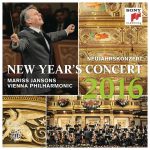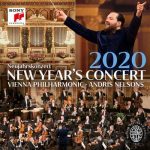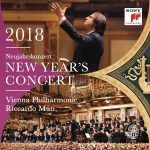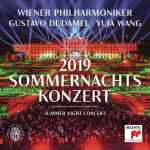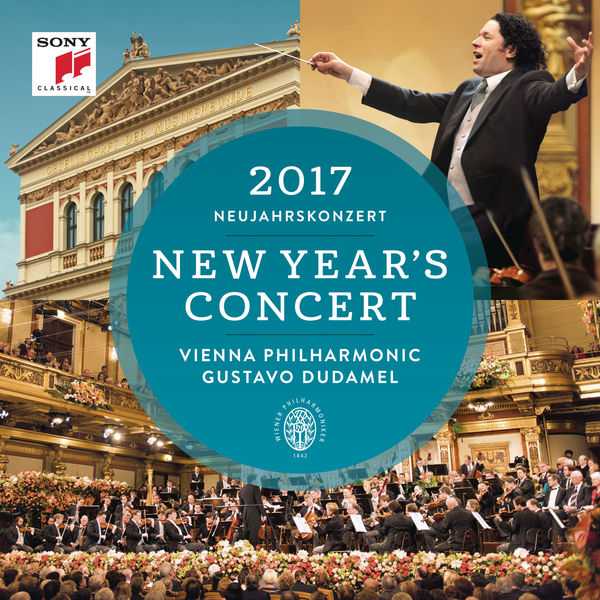

Composer: Franz Lehár, Carl Otto Ehrenfried Nicolai, Eduard Strauss, Johann Strauss, Josef Strauss, Franz von Suppe, Emile Waldteufel, Carl Michael Ziehrer
Orchestra: Wiener Philharmoniker
Conductor: Gustavo Dudamel
Format: FLAC (tracks)
Label: Sony
Catalogue: 88985376152
Release: 2017
Size: 1.94 GB
Recovery: +3%
Scan: yes
01. Lehár: Nechledil March
02. Waldteufel: Les Patineurs – Valse, Op. 183
03. Strauss J II: Es gibt nur a Kaiserstadt, ‘s gibt nur a Wien, Polka, Op. 291
04. Strauss Josef: Winterlust, Polka schnell, Op. 121
05. Strauss J II: Mephisto’s Hollenrufe, Waltz, Op. 101
06. Strauss J II: So ängstlich sind wir nicht! – Polka, Op. 413
07. Suppe: Pique Dame Overture
08. Ziehrer: Hereinspaziert! Walzer, Op. 518
09. Nicolai: Mondaufgang
10. Strauss J II: Pepita-Polka, Op. 138
11. Strauss J II: Rotunde-Quadrille, Op. 360
12. Strauss J II: Die Extravaganten, Walzer, Op. 205
13 .Strauss J I: Indianer Galopp, Op. 111
14. Strauss Josef: Die Nasswalderin, Polka Mazur, Op. 267
15. Strauss J II: Auf zum Tanze! Polka schnell, Op. 436
16. Strauss J II: Tausendundeine Nacht, Op. 346
17. Strauss J II: Tik-Tak Polka, Polka schnell, Op. 365
18. Strauss E: Mit Vergnügen! (With Pleasure), Op. 228
19. Neujahrsgruß / New Year’s Address / Allocution du Nouvel An
20. Strauss J II: An der schönen, blauen Donau, Op. 314
21. Strauss J I: Radetzky March, Op. 228
As a brand name, the Vienna New Year’s Concert can trace back its origins to 31 December 1939. In other words, the concert initially took place on the last day of the year. By 1941, however, it was being held on 1 January, when the Vienna Philharmonic established a tradition that continues to flourish to this day.
The list of names of leading conductors who have led the Vienna Philharmonic’s New Year’s Concerts reads like a veritable Who’s Who of great maestros: including Herbert von Karajan, Lorin Maazel, Claudio Abbado, Carlos Kleiber, Zubin Mehta, Riccardo Muti, Nikolaus Harnoncourt, Seiji Ozawa, Mariss Jansons, and Franz Welser-Möst.
It is not least thanks to this illustrious succession of great conductors that the Vienna New Year’s Concert remains unique, ushering in the New Year in a way that has often been imitated but never equaled. Its universal popularity is undoubtedly due to the direct – or deferred – live broadcast from the flower-filled Golden Hall of the Vienna Musikverein. The first broadcast went out on Eurovision in 1959, the first colour relay in 1967. Now the concert is shown in countries throughout almost the entire world.
It continues to be works by members of the Strauss family – Johann Strauss Father and Son as well as Eduard and Josef Strauss – that are central to this media event. Old favourites from their output are heard alongside others that have never been recorded or are only rarely heard; all of them programmed around two fixed points in the concert: the Blue Danube Waltz and the Radetzky March.
Gustavo Dudamel’s skillful conducting and dedication to music drew international attention while he was just in his twenties and continues to attract diverse audiences throughout the world.
Dudamel began violin lessons at the age of 10 in Venezuela’s El Sistema music programme and then began studying conducting in 1995 with Rodolfo Saglimbeni. In 1999 he was named music director of the programe’s Simón Bolívar Youth Orchestra, studying with El Sistema’s founder, José Antonio Abreu. Just five years later, Dudamel won the inaugural Bamberger Symphoniker Gustav Mahler Competition, and became a highly sought-after orchestral and opera conductor, working with such ensembles as the Chicago Symphony, the New York Philharmonic, the City of Birmingham Symphony, the Israel Philharmonic, and the Dresden Staatskapelle. In 2007, he became music director of the Gothenburg Symphony, with which he remained until 2012. That same year, Dudamel was the first conductor under the age of 30 in many years to be appointed to a major orchestra when he was named music director of the Los Angeles Philharmonic beginning with the 2009-2010 season. Dudamel’s position with the LA Philharmonic was extended through its 100th anniversary season.
This 2017 concert, on the market by the end of the second week in January, marked the first Vienna Philharmonic New Year’s Concert led by the sensational Venezuelan-American conductor Gustavo Dudamel. Those hoping, or fearing, that he would shake up the repertory of this Vienna institution, are given little material to work with; the program follows the time-honored pattern, with the Strauss family in the foremost position and The Beautiful Blue Danube in its proper place in the encores. This said, Dudamel’s New Year’s Concert is fresh and energetic, and really a great deal of fun. The Viennese audience rewards him with warm applause and as much enthusiasm as Viennese can muster. He introduces quite a few pieces that are new to the concert, closing out the first half with the utterly charming Pepita-Polka, Op. 138, an unjustly neglected masterpiece of Johann Strauss II. There are no fewer than four Johann II premieres, and among the other newcomers is the familiar Skaters’ Waltz (Les Patineurs) of Emile Waldteufel. In the main Strauss pieces, Dudamel applies his high-energy but precise sound to this highly familiar material, and lo and behold it works: there are foot-tappers galore, but the characteristic Strauss humor is not lost. Sample the Rotunde-Quadrille, Op. 360, of Johann II for an idea, and note that the sound quality on the New Year’s Concert release gets just a little better each year. The New Year’s Concert, far from being a moribund tradition, is a growing phenomenon, broadcast as far afield as Indonesia and Mozambique. With satisfying performances like these, that trend seems likely to continue.
